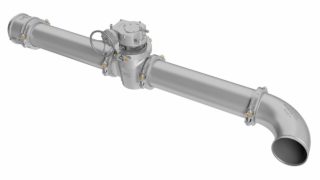Posted on April 26, 2018
It’s All About Safety Culture
Behavior Based Safety (BBS) is a hot topic in the manufacturing industry. As a non-traditional safety strategy that lives outside formal rules and policies, BBS can be challenging to implement. On April 28, Victaulic is celebrating World Safety and Health at Work Day by sharing our secrets to sustaining BBS and creating a strong safety culture.
What is Behavior Based Safety
First, let’s take a look at what Behavior Based Safety actually implies. BBS is based on the theory that safety is a series of choices made by every one of us – choices which are behavioral in nature, and under our control. BBS also works to identify, analyze and correct unsafe choices on the job. This methodology empowers employees to take safety into their own hands by actively encouraging them to consider the role of their behavior in safety incidents.
According to BBS methodology, there are three main factors that influence safe decision-making:
- The ability to recognize hazards and evaluate risk,
- The motivation to be safe, and,
- The ability to focus while performing the current task at hand safely.
When employees are provided with tools for awareness, motivation and focus, there is a greatly reduced risk of personal injury or other incidents.
BBS makes a lot of promises, but it’s not a silver bullet solution – the methodology needs to be reinforced consistently if a company wants to influence employee actions towards safer outcomes. Communication, observation and strong leadership are crucial for safe decision-making.
How is Victaulic Reinforcing Behavior Based Safety?
Communication
Reinforcing the concepts of Behavior Based Safety takes sustained and reliable communication. At Victaulic, one of the communication tools that supports BBS are “Toolbox Talks.” Toolbox Talks occur on a weekly basis and give supervisors the opportunity to connect directly with employees to reflect on safe and unsafe choices that took place throughout the week. Open communication between safety leaders and safety learners provides opportunities for improvement, and allows for reflection and analysis of unsafe decision-making.
Safety communication takes place off the manufacturing floor, too. Every day, Victaulic safety subject matter experts pen emails highlighting BBS concepts – and the consequences of unsafe behavior. These concrete examples of unsafe behavior expose all Victaulic staff to BBS concepts, and enforce safety culture throughout the entirety of our business processes.
Observing Behavior & Asking Why
Observation and conversation are hugely important for supporting safety culture in the workplace. Safety leaders observe safe and unsafe behaviors – when an employee makes an unsafe choice, a conversation will be opened up, and the employee will be questioned about the motivation behind the risky decision. Once the “why” is understood, we can more effectively target the reason the decision was made, identify safe, correct behavior and coach employees into a pattern of better decision-making.
Leading Safely & Giving Feedback
Employees are responsible for their safe behavior, but reinforcing good choices falls to supervisors and executive leadership. Leaders must take safety culture seriously and exhibit safe behaviors themselves if they expect to influence other employees. Work leaders also have an obligation to confront unsafe behaviors and acts so that employees recognize risks. Proactive, consistent support of BBS methodology is key for sustaining a strong safety culture.
Is Behavior Based Safety Working?
At Victaulic, Behavior Based Safety has proven key for lowering injury rates. We lead our industries in safety, as shown by the metrics below:
- The recordable injury rate for the iron foundry industry is 6.1. Victaulic beats this rate by more than 60 percent, with an injury rate of 2.4.
- The recordable injury rate for the manufacturing industry is 3.3. Victaulic beats this rate by 61 percent, with an injury rate of 1.28.
In 2017, 97 percent of safety incident occurrences could be attributed to poor choices made by employees, further demonstrating the need for a strong Behavior Based Safety program.
Workplace injuries impact every company’s financial bottom line, impact employee morale and productivity and can have significant personal consequences. With a BBS program in place, companies can strengthen their safety culture and reduce job-related injuries.
To learn more about implementing a BBS program, check out the “Behavior Based Safety Guide” from the Health and Safety Authority. Be sure to keep up with Victaulic as we continue to improve our program and empower employees!



